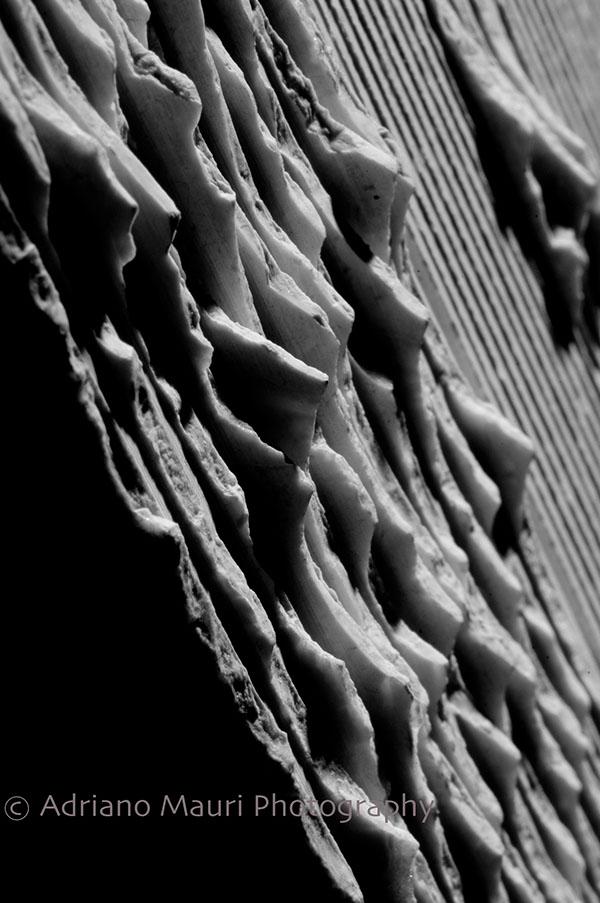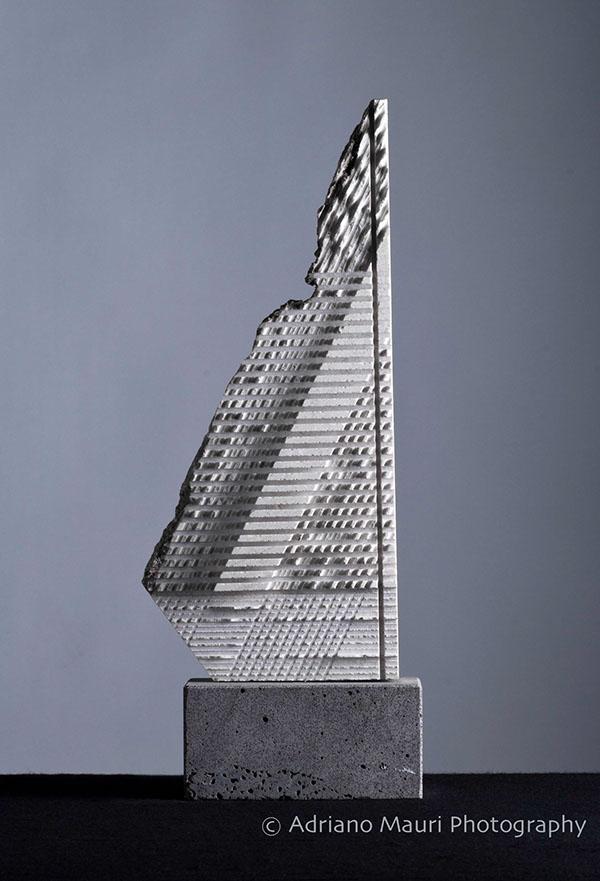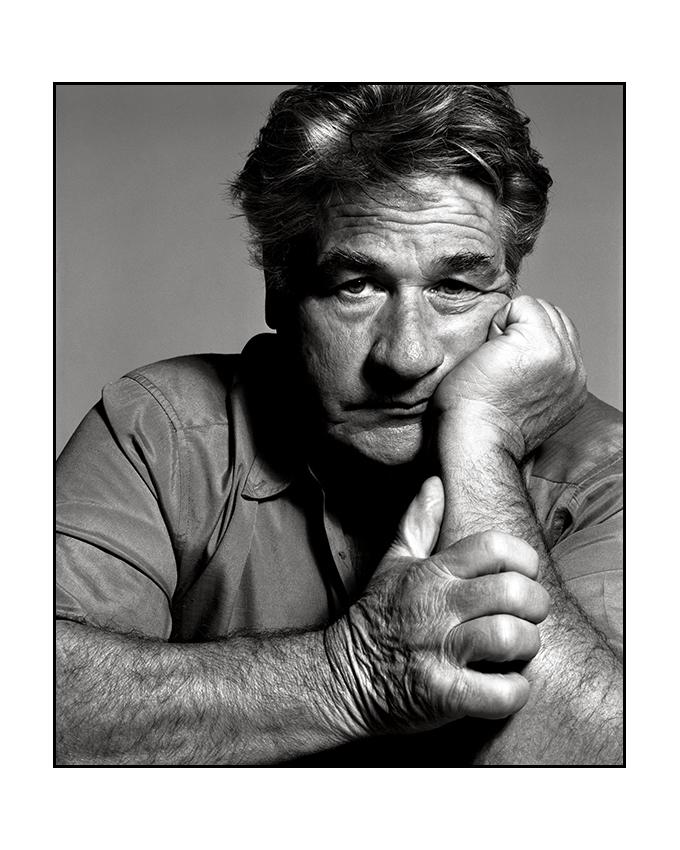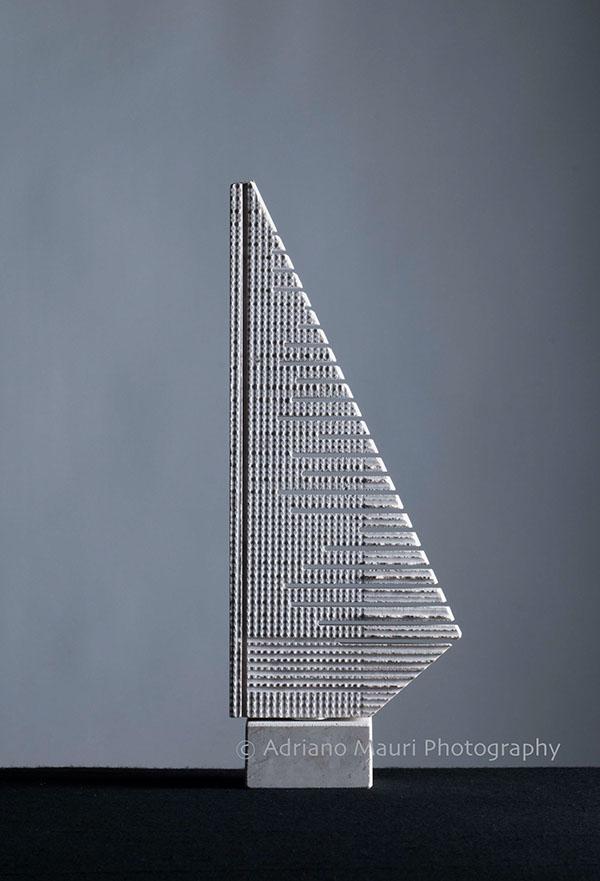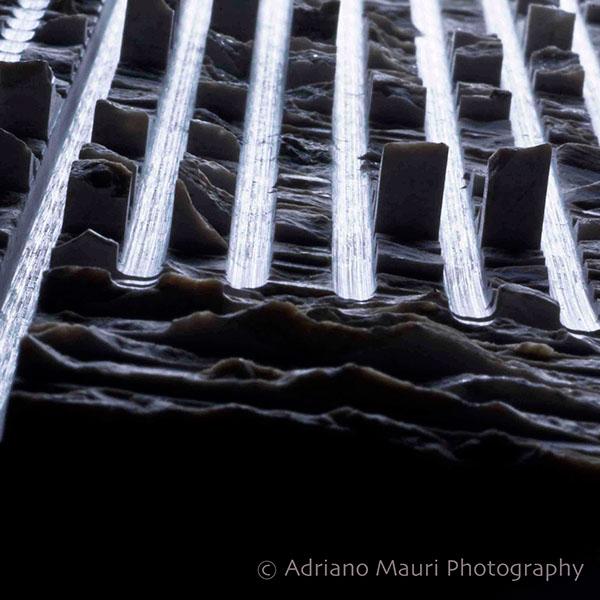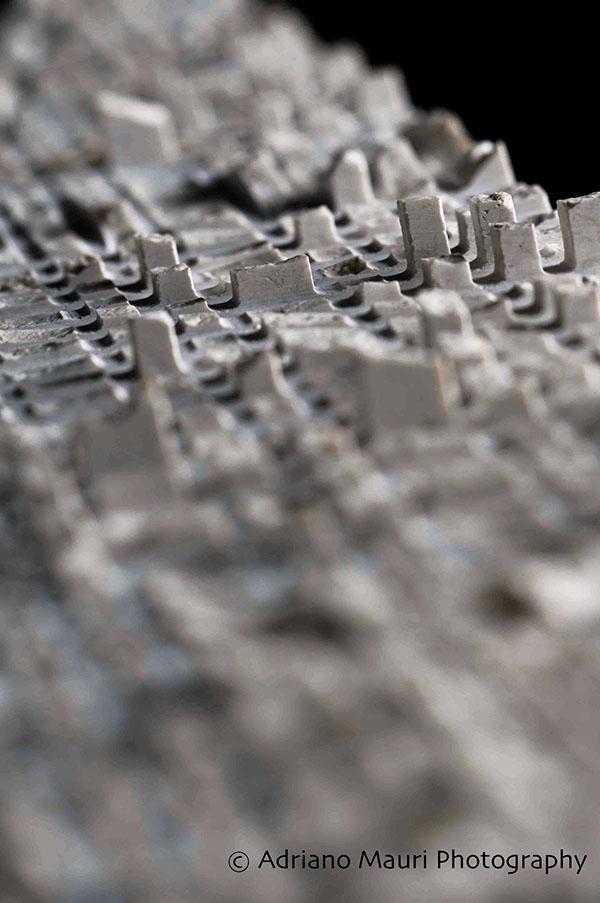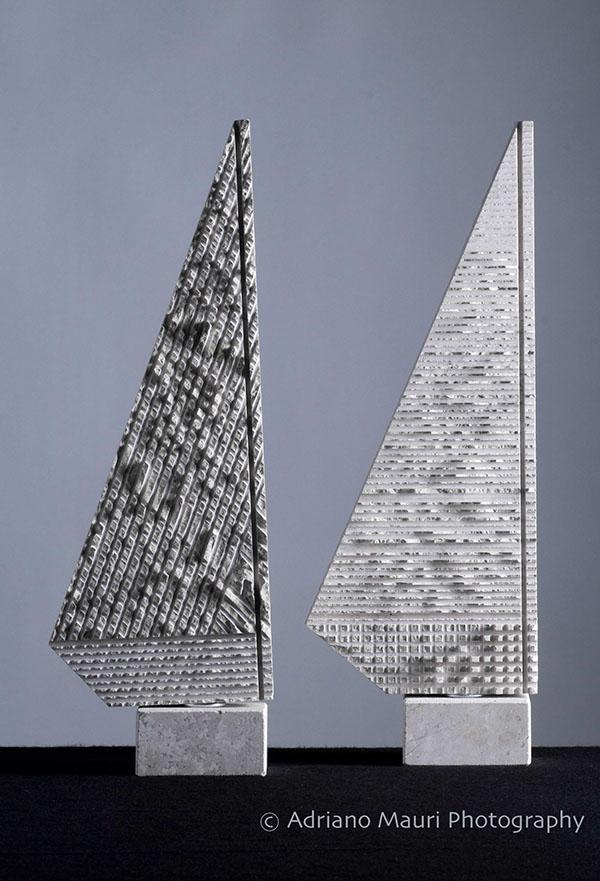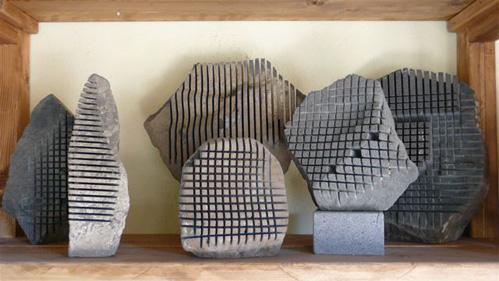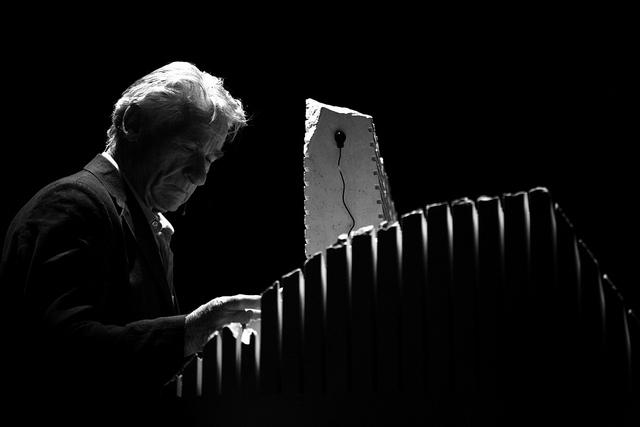There is a pact between Pinuccio Sciola and Sardinian stones, to the point that they are as alike as two peas in a pod. That must be the reason why stones let him do anything to them: cut, drill, break into pieces. He can also get them to play music. (Renzo Piano)
Material and dream, monumentality and lightness, sculpture and music. Pinuccio Sciola, in your Turandot everything seems to revolve around the contrast between immaterial elements such as singing, miming, the projection of videos and the imposing architecture of your stone creations…
For centuries there has been the idea that stone is a hard and rigid material, laden with negativity, dumb, inexpressive. As a matter of fact—if I hit it—that I hear is only the noise of the blow the stone receives, I can't get what's inside the stone to play. Stone instead has a soul, a memory storing the history of humanity. The first paragraph of the Genesis says “first there was the sound of the Universe”. It is clear that those sounds, that memory, that genetic code are inside the stone, which guards them like a treasure chest. I want to remind those who are sceptical that all the information circulated today by computers and digital networks in the end is stored and elaborated using infinitesimal silicon crystals.
Let's take a common stone, such as for example limestone. If I cause it to vibrate with my hands, it produces liquid sounds: that is simply because from a geological point of view limestone is just fossillized water. It's as if the memory of water was imprisoned inside that stone during glaciation, and only by caressing it does the sound come out. The same happens with volcanic basalt. If I “play” and stimulate one of my basalt sculptures with my hands, it gives back its soul of fire and earth. There will not be two stones which are the same, because in every type of stone and in each of the little squares I carved on their surface the sound spreads out differently and tells us a different story.
How can these hidden, almost secret voices, tell us Turandot's musical fairy tale?
In this case my sculptures give life to an out-and-out architecture which is visual, theatrical and musical at once, a resounding city where Turandot's story takes place. This is not my first experience in designing a theatrical scenery, although I had never challenged myself in an opera. Working for the Lyrical Theatre in Cagliari was a special opportunity, which makes me very happy and proud. Actually the space where I work, my lab and my yard in San Sperate, look a lot like a scenery. And my works were born within the scenery of nature. The really stimulating aspect of this experience is that in the labs of the Lyrical Theatre we were able to recreate my stones with gigantic dimensions and with materials different from stone, becoming the architectural elements of a fantastic city, thanks to the extraordinary abilities and experience of the people working there.
This Turandot reveals Sardinia's strong ancestral trait, capable of equally reinterpreting a contemporary, sometimes even futurist, Beijing. We tried to imagine all events taking place in far away places, but at the same time very near. It's as if the Princess's heart is imprisoned, just like music, inside the stone. And only love can free it. Exactly what happens when I play my sculptures caressing them.
In this case the dimensions of the petrified city in Turandot are not exactly caress-size...
When the scenery was being built, I was moved by seeing my sculptures recreated to a large scale, as they are already quite big. In Turandot the architectural elements of my sound cities will be nearly 15 meters high, the height of a real five-story building. It is very exciting and I want to share this with the audience. This is why I installed some imposing scenic elements also outside the theartre and in the foyer, two large buildings which can give the audience the feeling that they are wrapped up in stone architectures, even before the show starts, becoming part of an unexpected and vibrant sensory experience. I tried to overcome the scenic convention of the stage, the black rectangle where everything takes place and the scenic and visual elements of the show concentrate. Since the theartre is an essential part of the city, and the city is a wonderful natural theartre itself, I imagined that these fantastic architectures can occupy and characterize the urban space.
So, the contribution of a sculptor lent to opera to this production will not go unnoticed.
I hope that in the end this Turandot will be appreciated especially for the extraordinary joint effort which led to its creation. I must say that from the beginning me, director Pier Francesco Maestrini and Marco Nateri, who designed the costumes, have been on the same wavelength, sharing our creativity and passion. All the various phases of the staging of this Turandot were extraordinary, thanks to the talent and professionalism of the people working in the scene laboratories of the Lyrical Theatre, under the supervision of Sabrina Cuccu. You can have the best ideas in the world, but if they are not supported by the hands, different competences and sensitivity of the people who must bring them to life, a result like this cannot be achieved. Obviously this is not the first time for the Lyrical Theatre, high-level shows are constantly created here and there is an extraordinary quality standard. But I like to think that what we have done here together over these months is really unique.
The sound of stones is the same as that of the human voice: the only one coming directly from nature, naturally making it possible. Voice is modulated by men and by women; stone is shaped by Sciola in order for it to play. In both cases, however, there is no transformation of the material, wood or metal, in the otherwise non-existing resounding shape, as for instruments. That way the sound of Sciola's stones is directly part of the sound landscape, just like the voice (Luigi Pestalozza).
(Interview by Sergio Benoni—translated by Franco Staffa)
“I have only learned to release the voice from the stones. It has always been there, but nobody had paid attention to it”
http://www.charmingsardinia.com/sardinia/blog/charming-sardinia-pinuccio-sciola-and-voice-stones
There is a proverb saying that unemotional hearts are made of stone, and there is another that associates stone to the attitude of stubborn people.
Also, there are those who “throw the stone and then hide the end” in the act of avoiding responsibilities.
Finally, and more poetically, there is someone who knows stones like no one did, and found a way to make them sing just using one finger.
This magic is symbolic of the art of Pinuccio Sciola, who is both sculptor, poet and farmer.
The perfect place to meet with the artist is San Sperate, a small and colorful village few kilometers far from Cagliari. This is the place of peaches and white orange blossoms, as well as “the village of murals,” as it is widely known since the early Seventies. This is because external walls of houses and streets in town reveal more than 250 art pieces painted by artists from all over the world.
San Sperate is symbolic of the strong relationship between Sciola and the land. Land of Sardinia, land due to plough and to seed. Land to work on using your hands. Land to host houses and our lives. Land to keep record of time through the stones. It is 1996 when Sciola for the first time experiments with the techniques of stone engraving.
Limestone or basaltic rocks delicately carved until the deep heart: a slow process of parallel and lucid cuts likely to sing if slightly touched in the right way.
«Dear San Francesco, when you used to talk to the water, to the flowers and even to the stars, the stone used to listen to you in silence. Now, thanks to both the intuition of an artist and the technology, stone will make you listen its voice and sounds». Pinuccio Sciola
